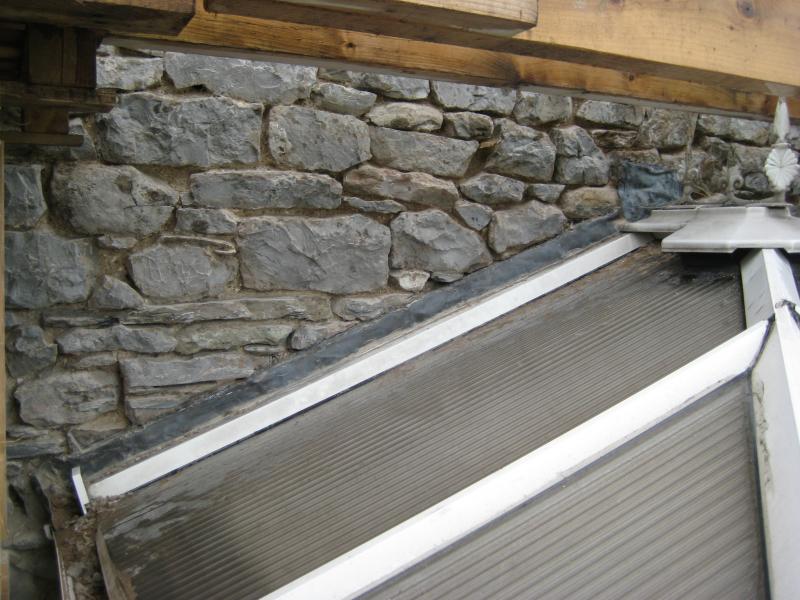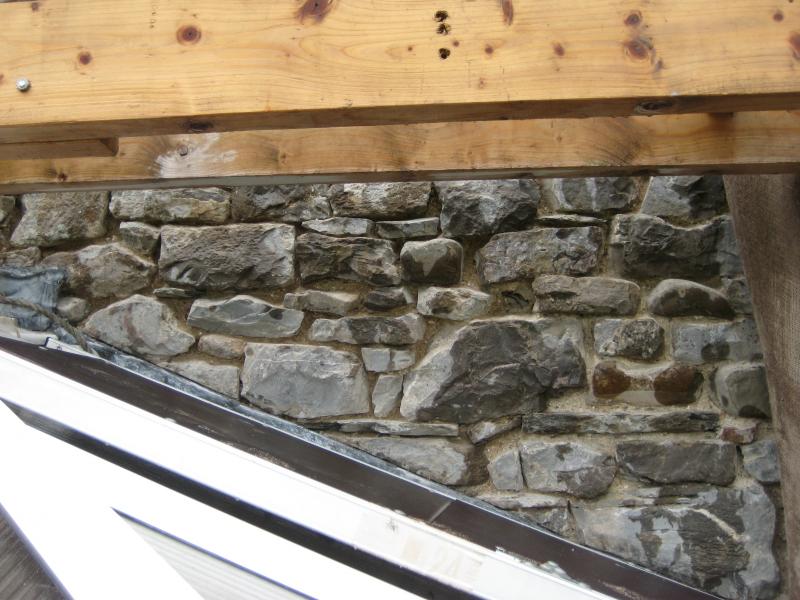Hi all
apologies for rambling in advance!
I have an old exposed limestone farmhouse in cumbria. 10 years ago i had a conservatory fitted and it has always leaked. So i am going to have a go at redoing the flashing. as you can see from pics, there is a line of continuous flashing about 7cm wide which seems a bit narrow to me, and silicon has been used in the where the flashing enters the cut joint in the wall. where the flashing connects with the conservatory, it has been stuck with silicon.
I am thinking about putting in stepped flashing, (I have been looking at pros and cons of stepped and continuous and stepped appears more rain resistant if done well). obviously either system is awkward with the limestone which undulates and is irregular in joint and size. however, there are some joints which can be used and i will cut lines out of the limestone where necessary - although it seems so wrong to be cutting lines in stone on an old (but not listed) building. I am also thinking of folding the flashing pieces over the raised bar (the bar that is following and closest to the wall on the pics), so hopefully rain will clear more effectively.
any thoughts please?
also couple questions:
1.how deep do the cuts have to be into the stone for the lead to slot into
2. how do you get round the problem at either side of the roof where the flashing starts. im guessing this is a point where water can enter?
3. is a sealant required where the lead is fixed in the wall? i am repointing using hydraulic lime 3.5
I have looked at the wicks leaflet etc, but most advice is for brick and rendered walls. not been able to find anything on traditional limestone construction
thanks a lot
apologies for rambling in advance!
I have an old exposed limestone farmhouse in cumbria. 10 years ago i had a conservatory fitted and it has always leaked. So i am going to have a go at redoing the flashing. as you can see from pics, there is a line of continuous flashing about 7cm wide which seems a bit narrow to me, and silicon has been used in the where the flashing enters the cut joint in the wall. where the flashing connects with the conservatory, it has been stuck with silicon.
I am thinking about putting in stepped flashing, (I have been looking at pros and cons of stepped and continuous and stepped appears more rain resistant if done well). obviously either system is awkward with the limestone which undulates and is irregular in joint and size. however, there are some joints which can be used and i will cut lines out of the limestone where necessary - although it seems so wrong to be cutting lines in stone on an old (but not listed) building. I am also thinking of folding the flashing pieces over the raised bar (the bar that is following and closest to the wall on the pics), so hopefully rain will clear more effectively.
any thoughts please?
also couple questions:
1.how deep do the cuts have to be into the stone for the lead to slot into
2. how do you get round the problem at either side of the roof where the flashing starts. im guessing this is a point where water can enter?
3. is a sealant required where the lead is fixed in the wall? i am repointing using hydraulic lime 3.5
I have looked at the wicks leaflet etc, but most advice is for brick and rendered walls. not been able to find anything on traditional limestone construction
thanks a lot




